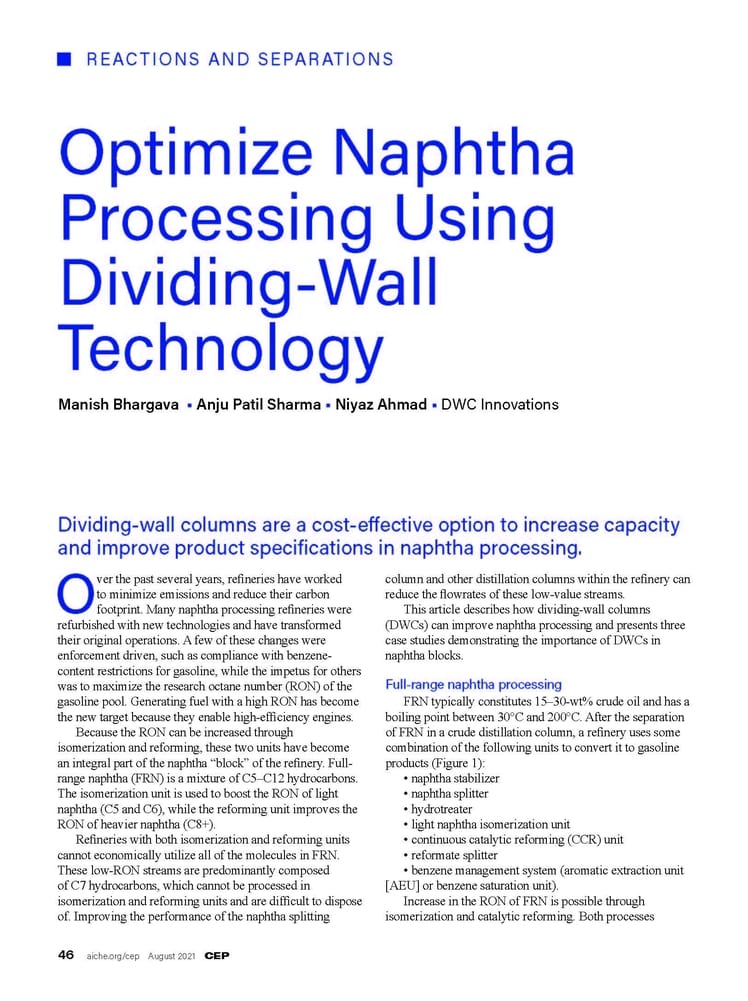Refineries have to continuously explore new opportunities in order to sustain and grow using energy integration of upstream and downstream operations and finding out ways to divert the available feedstock into more marketable and in demand products. There is the opportunity to use the feedstocks to make raw materials which can produce lower cost products like ethylene which is the most widely used monomer in the petrochemical industry. Typically, PCN is composed of the lighter fraction of straight run naphtha. The major cause of concern is the stringent compliance of CS2 content as it tends to poison the catalyst irreversibly. After analyzing the ways to remove CS2 from PCN by hydrotreating, adsorption and conventional distillation, the use of DWCs seems to be the most feasible and cost-effective option.
Reprinted from PTQ Q3 2022.
Optimize Naphtha Processing using Dividing Wall Technology : CEP
Full range naphtha is a complex mixture of hydrocarbon molecules from 5 to 12 carbon atoms. This fraction of hydrocarbons has a boiling point range between 30°C and 200°C. It typically constitutes 15-30% of crude oil, by weight. As the focus of refineries shifted towards minimizing the carbon foot print and lower emissions, focus on fuel with higher research octane number (RON) and low emissions became the gold marked products which any facility targeted to produce. Naphtha processing facilities surged ahead in refurbishing so as to make more of high-end fuel along with incorporating technologies on improving the RON of the gasoline fuel. Many refineries processing naphtha eventually evolved towards producing fuel which was more sustainable and in demand and for this they have gone through various transformations in their original operations. Read the complete article in Aug 2021 issue of CEP.
DWC revamp boosts octane and throughput : PTQ
Advancements in distillation plays a key role in enhancing & debottlenecking existing units in a refinery. DWC’scan boost the octane of isomerization units by 2-4 points. An isomerization process converts low octane straight chain hydrocarbons to high octane branched chain isomers. Since the isomerization reactions are in equilibrium, the product octane is defined by the number of separation units in the process. A typical light naphtha isomerization unit with a deisohexanizer (DIH) column can produce an isomerate product of RON 87-88. For further increase in RON additional deisopentanizer (DIP) and depentanizer (DP) columns are required. Dividing wall column retrofits in existing DIH column and provides it with an additional functionality of a DIP or a DP column.

